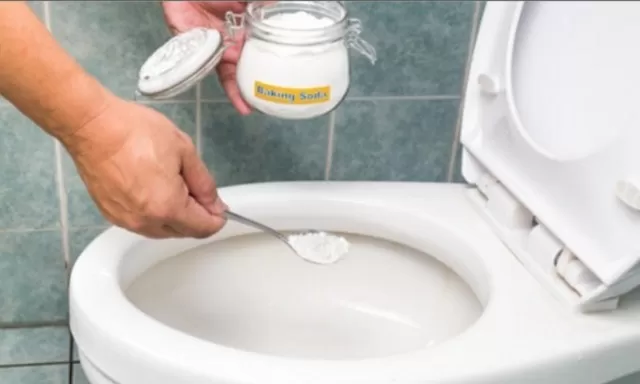Unplugged: Clever Toilet Unclogging Methods. Finding yourself with a stopped-up toilet and no plunger can be a challenging situation. However, with a little creativity and resourcefulness, you can still unclog the toilet using materials you already have in your cabinets.
Introduce Warm Water (Avoid Boiling) to the Equation

When faced with a stubborn clog or a non-flushing toilet, your go-to solution should involve pouring warm water.
You can opt for the highest temperature setting on your Bathroom Sink or tub faucet, or mildly heat the water on the stove. However, it’s crucial to avoid reaching the boiling point.
Allow the warm water to flow down the drain and let it sit for a few minutes, enabling it to potentially loosen the obstruction. If you witness the water starting to drain, your efforts have likely been successful.
Follow up by flushing the toilet once or twice. In most instances, the application of hot water alone is sufficient to dislodge the cause of the blockage.
Integrate Dish Soap for Added Effectiveness
To escalate the unclogging process, retrieve some Dish Soap from your kitchen and generously squeeze around a quarter cup into the toilet bowl.
Allow the soap to sit for 5 to 10 minutes, enabling it to traverse down the drain and reach the clog. Next, pour hot water (again, ensure it’s not boiling) into the bowl, creating a soapy mixture. In many cases, the dish soap acts as a lubricant, greasing the clog in the toilet drain sufficiently to restore proper flow.
Harness the Power of Baking Soda and Vinegar

Who would have thought that an elementary school science lesson could come to the rescue for unclogging toilets? However, exercise caution and avoid attempting this method if the toilet bowl is already filled to the brim.
In such cases, either remove some water from the bowl or wait until the water level recedes. Here’s what you need to do: pour one cup of baking soda and one cup of vinegar down the toilet drain.
The chemical reaction between the vinegar and baking soda will create a natural bubbling effect, effectively loosening the clog. After approximately 30 minutes, follow up with hot water and observe if the drain clears.
If it does, you’re good to go. If not, repeat the process once more.
Embrace the Toilet Brush
While it may not be the most appealing option, using a toilet brush can be an effective alternative if a plunger is unavailable.
To tackle a toilet clog without a plunger, you can utilize a toilet brush as an alternative. Here’s how to proceed:
1. Position the Brush: Ensure the toilet brush’s bristles are facing downward into the drain, making direct contact with the clog.
2. Pumping Motion: Using a firm grip on the handle, pump the brush up and down vigorously. Apply enough pressure to dislodge the obstruction and create movement in the drain. Repeat this motion several times.
3. Clearing the Clog: The pumping action should help loosen the clog, allowing it to clear. Be patient and persistent, as it may take a few attempts to fully remove the obstruction.
It’s worth mentioning that while a toilet brush can serve as a temporary solution, it’s advisable to invest in a reliable toilet plunger for long-term preparedness. A plunger specifically designed for toilets is more effective at creating the necessary suction and pressure to dislodge clogs. To select the best plunger for your needs, consult a well-researched guide or seek recommendations from plumbing professionals.
Craft a Homemade Drain Snake

When a dedicated drain snake is not accessible, you can fashion your own using a wire coat hanger obtained from your closet.
Simply straighten out the hanger, leaving only the hook intact. Wrap a small rag around the hook to prevent any scratches or damage to the porcelain.
With rubber gloves on, gently angle the hanger down the drain until you locate the clog. Once the water starts to drain, flush the toilet a few times to ensure thorough clearing.
*The information is for reference only.